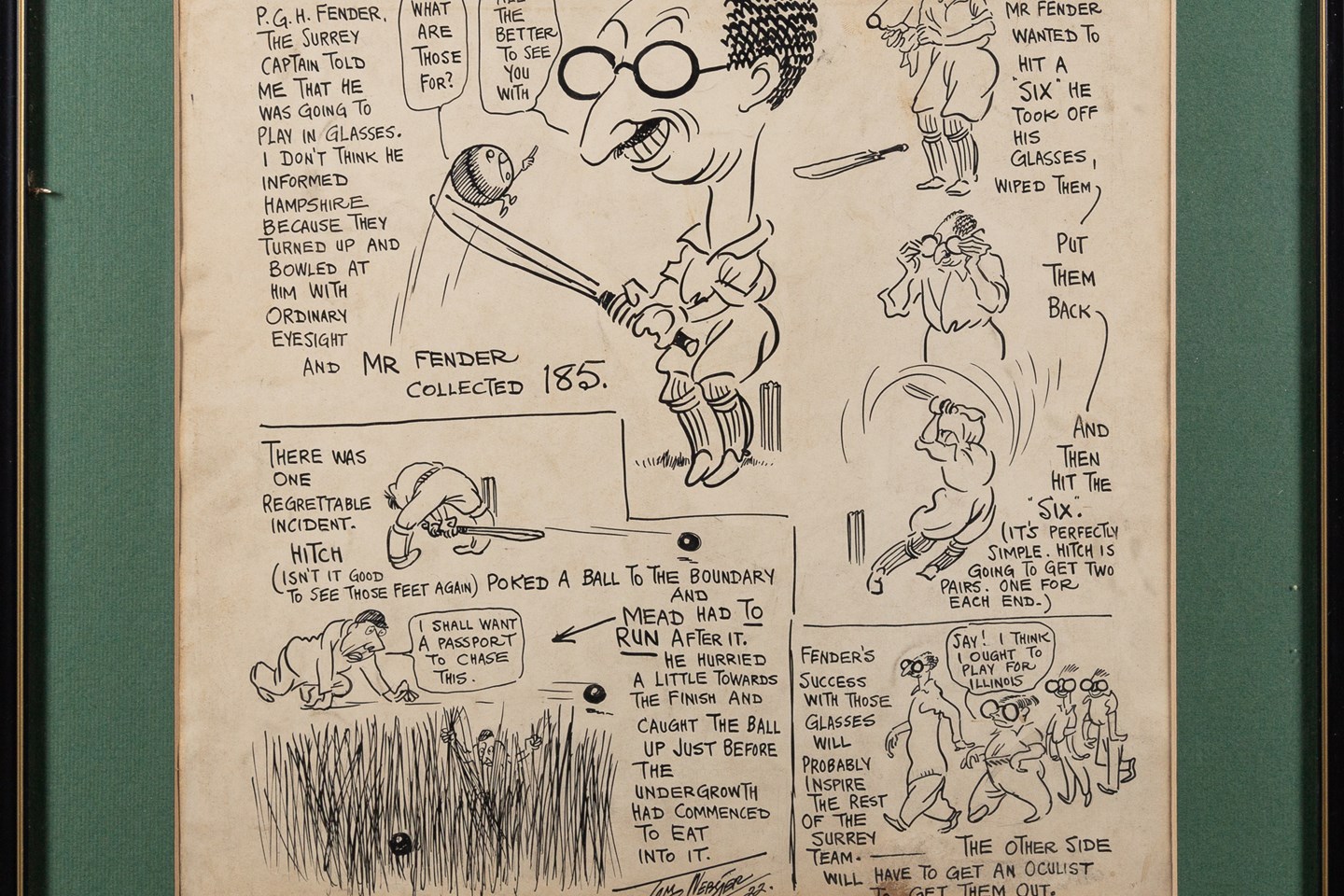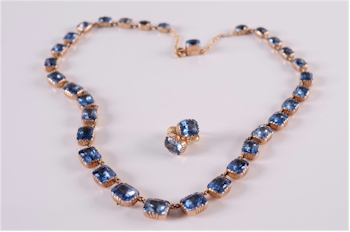
An early 20th century gold and blue paste riviere necklace with matching earrings. (FS15/164).
An early 20th century gold and blue paste riviere necklace with matching earrings far exceeded its pre-sale estimate of £250-£350 (FS15/164).
Although quite simple in design, with a single line of pastes without any additional ornamentation, it represents one of the most sophisticated and classic items of jewellery, perhaps, of all time. Hand cut and faceted pastes have been finely set in closed back collets, remaining as timely in design as they were hundreds of years ago. The necklace could readily be worn for formal or casual events.
This necklace's style, favoured since the 1700s, continues to be in demand to this day. There are no diamonds in this piece. Its value lies within its singular beauty and rarity, which was reflected by the hammer price reaching £1,550.
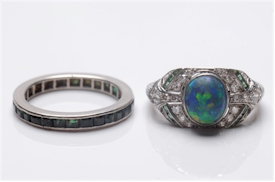
An early 20th Century black opal, emerald and diamond cluster ring the central oval black opal approximately 8.3mm x 6.8mm in rub over setting within a surround of circular diamonds highlighted with rectangular emeralds and between foliate engraved shoulders, together with an emerald eternity ring in channel setting. Realised £2,600. (FS15/148).
An early 20th century black opal, emerald and diamond cluster ring (together with an emerald eternity ring in channel setting) (FS15/148), also exceeded its pre-sale estimate of £800-£1,200. The ring created a fair amount of interest during the Fine Art Sale; with its unique appearance, rich colour and finish.
Up to the first half of the 19th century, opals were relatively rare. But then their career boomed suddenly and made them one of the most popular gemstones. In the era of Art Deco, opals flourished, with contemporary gemstone artists preferring them to all other stones because of their subdued charm, which in turn was excellently suited to be combined with enamel, another very popular material of those days.
Opal rings are available in a huge range of styles from traditional opal cluster rings set with diamonds, such as this one, through to contemporary opal rings with the gem being set in a modern style, both with and without other gems and valued according to the type of opal used in the design as well as the precious metal that the ring is crafted in.
When set in white metal, the rich colour of the opal is complimented and the colour play emanates a very special attraction and fascination. This 20th century black opal and diamond mounted ring reflected this in our July Fine Art Sale reaching a total hammer price of £2,600.
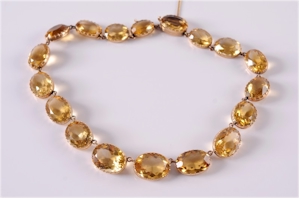
A late 19th century gold and citrine mounted riviere necklace. Realised £2,000. (FS15/172).
A late 19th century gold and citrine mounted riviere necklace (FS15/172) was quite sought after in the recent Fine Art Sale. Set in cut-down collect settings, the citrines within this necklace are rich in colour and clean to the eye.
Over the centuries, the citrine has acquired a reputation as a "success stone" said to promote prosperity and abundance. It is a gem stone that is also used to celebrate the 13th anniversary of marriage and makes for a very thoughtful gift and is a symbol of valuable relationships.
The colour of these gemstones give a feeling of happiness and the bright sparkling features make it ideal for wearing on any occasion and can make any outfit look exceptional. A timeless piece of jewellery and an earlier piece such as this one is even more sought after, with the hammer price reaching £2,000.
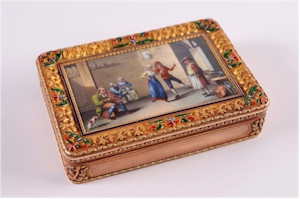
An early 19th century enamelled gold rectangular snuffbox. Realised £11,200. (FS15/206).
The early 19th century enamelled gold rectangular snuff box (FS15/206), which was estimated at between £5,000 and £8,000, injects quality and detail with its decorative engine-turned design.
With the 19th century came industrialisation and a decline in quality and taste. Most silver and gold snuff boxes were decorated with engine-turned designs and coarse carving. However, this enamelled gold snuff box is quite the opposite and a rare find for this period.
These decorative, utilitarian boxes were an indispensable accessory for many upper-class people from the 18th century through the middle of the 19th century. The lids were often adorned with a portrait, portrait miniature, hard stone inlays or a micro mosaic panel. Some of the most expensive just used subtly different colours of gold.
Even after snuff-taking ceased to be popular in general, the practice lingered among diplomats. Monarchs retained the habit of bestowing snuffboxes upon ambassadors and other intermediaries as a form of honour. Today snuffboxes are collected at many levels - at the top of the market they tend to be called "gold boxes". In excellent condition and together with a red leather covered fitted case, this snuff box reached a hammer price of £11,200.
- Bearnes Hampton & Littlewood
- Fine Art Auctioneers
- Fine Jewellery
- Jewellery Auctions








